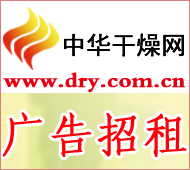Quanzhou pursues circular economy to develop private enterprises

The recycled waste PET bottle (sheet) is shovelled into the furnace, crushed, dried, spun... At the other end of the machine, a roll of woven fabric stretches out. This is a scene the reporter saw last week at Quanchuan Baichuan Recycling Technology Co., Ltd. in Quanzhou, Fujian Province. The company uses the waste generated by local petrochemical companies for recycling. It is understood that recycling 1 ton of waste polyester plastic bottles is equivalent to saving 6 tons of oil resources. In Baichuan Company, 3,600 tons of waste plastic bottles are regenerated each year, becoming 3,300 tons of fabrics, and the annual production value exceeds 140 million yuan.
Fujian Quangang District Petrochemical Base is one of the two important bases in Fujian. The current planning area of ​​the industrial zone is approximately 28.68 square kilometers and consists of four zones: Wonderland, Yangyu, Chalkali and Nanshan. In recent years, with the integration of Fu Lian into commercial operations, the petrochemical industry has been able to develop and grow rapidly. It has developed an area of ​​10.24 square kilometers and achieved a petrochemical output value of 66.8 billion yuan in 2011. While developing the economy, Fujian Quangang District also started an article on circular economy. Through capital and project approval, the area encourages enterprises to dock with the petrochemical industry and form a circular economy process of resource-product-renewable resources, turning petrochemical by-products into treasure.
“We have independently developed technologies such as printing and dyeing, resource regeneration, etc. At present, the production of 1 ton of polyester oxford can save 6 tons of oil resources, save 50 tons of printing and dyeing water, and reduce 4 tons of steam consumption.†Talking about circular economy, general manager of Baichuan Company Zhang Feipeng is very famous.
“The project is still under construction, and large companies will place orders at home.†Yu Weixi, the project leader, said that the project is the largest CO2 refinement in Fujian Province at the site of the 60,000-ton/year CO2 exhaust gas comprehensive utilization project in Quangang District. The project can increase production value by 35 million yuan each year and consume 30 million cubic meters of carbon dioxide."
In order to implement the sustainable development model, the Fujian Provincial Party Committee and the provincial government have included energy-saving and consumption-reduction targets into the annual economic and social development goals, decomposed and issued energy-saving and emission-reduction targets, and included target accomplishments in government performance and state-owned enterprise performance management. Responsibility and one-vote veto. Through effective working mechanisms and a series of strong policies, Fujian Province has achieved remarkable results in energy conservation and consumption reduction.
It is understood that Quangang, as the only national pilot industrial park for circular economy demonstration in Fujian Province, has invested nearly 1 billion yuan since November 2011 to build key projects such as Linde Gas, Cogeneration and other circular economy projects. .
Under effective guidance, a large number of private enterprises that pursue the development of circular economy have begun to accelerate the connection with the large petrochemical enterprises. Quanzhou Quangang cooperated with CO2 Gas Co., Ltd. to build the largest CO2 refining project in the province. Through the recycling of CO2 tail gas emitted from the United Petrochemical Company's refining process, the annual output of 60,000 tons of liquid carbon dioxide with a purity of 99.99% can be reduced by 30 million cubic meters per year. Carbon dioxide emissions from rice; Fujian Dongxin Petrochemical Co., Ltd. invested 567 million yuan to build the first cyclohexanone production line in the province. It spent nearly 200 million yuan to install a sewage treatment and waste gas recovery device and produce it through recycling. Sodium carbonate, a chemical raw material ... many private low-carbon projects have made the local petrochemical industry increasingly green.
Turn waste into treasure and share resources. Quangang to refining the integration as the basis, to establish a circular economy as the core, building a circular economy industrial chain to realize the park energy consumption, pollution, environmental quality and other ecological park to reach the level of the national model stone chemical industry. At the same time, they also focused on the construction of the petrochemical recycling industry chain and the demonstration chain of the clean energy industry, and established a comprehensive system for the efficient use of resources and recycling.
1. Environmental protection and regeneration. At present, the problem of environmental protection is getting more and more serious, and countries around the world have a deep understanding of environmental protection. The concept of "plasticizing with paper tape" has been around for a long time, and paper as an environmentally friendly and recycled product is its value. And it will continue to develop in the near future.
2. Low cost. The overall cost of using paper for packaging is relatively low, which is in line with the merchants` demand for cost control and also in line with the long-term development trend of the market.
3. Simple style. The packaging style of white kraft paper is simple and atmospheric, and its retro characteristics are also favored by consumers. The reason why many well-known brands use kraft paper for packaging is because of its simple and retro characteristics.
4. Physical characteristics. Non-toxic, odorless, non-polluting, high strength, good air permeability, abrasion resistance, etc.
White Paper Bowl,White Paper Soup Bowl,Hot Soup Paper Bowl Disposable,Disposable Food Bowl
Ningbo Senmiao Trading Co., Ltd. , https://www.senmiaowasher.com